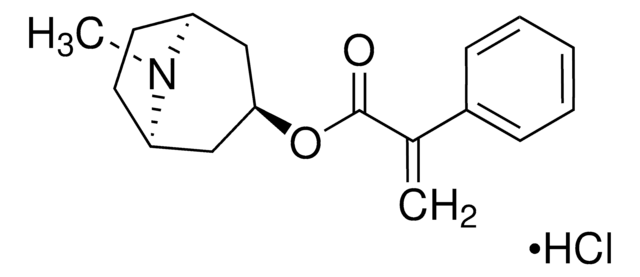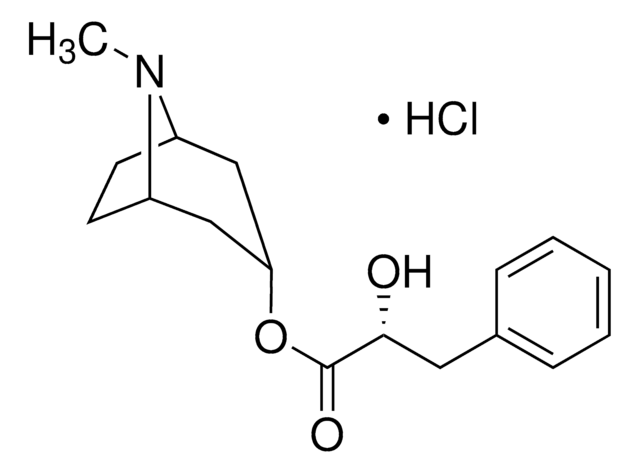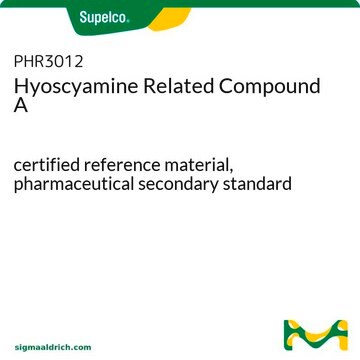SML0252
Anisodamine
≥98% (HPLC)
Synonim(y):
α-(Hydroxymethyl)-benzeneacetic acid 6-hydroxy-8-methyl-8-azabicyclo[3.2.1]oct-3-yl ester, 6β-Hydroxyhyoscyamine, 6-Hydroxyhyoscyamine
About This Item
Polecane produkty
Poziom jakości
Próba
≥98% (HPLC)
Postać
powder
kolor
white to beige
rozpuszczalność
H2O: ≥5 mg/mL
temp. przechowywania
room temp
ciąg SMILES
CN1[C@H]2C(O)C[C@@H]1C[C@H](OC(C(CO)C3=CC=CC=C3)=O)C2
InChI
1S/C17H23NO4/c1-18-12-7-13(9-15(18)16(20)8-12)22-17(21)14(10-19)11-5-3-2-4-6-11/h2-6,12-16,19-20H,7-10H2,1H3/t12-,13-,14+,15+,16-/m0/s1
Klucz InChI
WTQYWNWRJNXDEG-RBZJEDDUSA-N
Powiązane kategorie
Opis ogólny
Działania biochem./fizjol.
Cechy i korzyści
Hasło ostrzegawcze
Warning
Zwroty wskazujące rodzaj zagrożenia
Zwroty wskazujące środki ostrożności
Klasyfikacja zagrożeń
Acute Tox. 4 Oral - Eye Irrit. 2
Kod klasy składowania
11 - Combustible Solids
Klasa zagrożenia wodnego (WGK)
WGK 3
Temperatura zapłonu (°F)
Not applicable
Temperatura zapłonu (°C)
Not applicable
Certyfikaty analizy (CoA)
Poszukaj Certyfikaty analizy (CoA), wpisując numer partii/serii produktów. Numery serii i partii można znaleźć na etykiecie produktu po słowach „seria” lub „partia”.
Masz już ten produkt?
Dokumenty związane z niedawno zakupionymi produktami zostały zamieszczone w Bibliotece dokumentów.
Klienci oglądali również te produkty
Produkty
Muscarinic acetylcholine receptors mediate acetylcholine actions in CNS and non-nervous tissues, crucial for cell signaling.
Nasz zespół naukowców ma doświadczenie we wszystkich obszarach badań, w tym w naukach przyrodniczych, materiałoznawstwie, syntezie chemicznej, chromatografii, analityce i wielu innych dziedzinach.
Skontaktuj się z zespołem ds. pomocy technicznej










